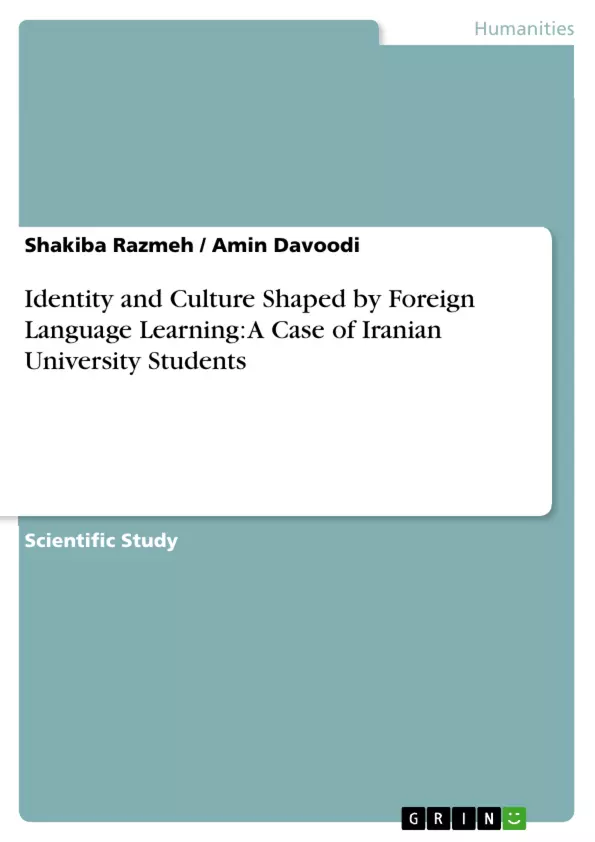As shifting identity and target cultural attachment act as important factors in the language learning process, this study aims to analyze the effects of learning English on the culture and identity change in Iranian EFL learners. To this end, fifty BA and fifty MA students majoring in TEFL participated in the study by answering the questionnaires. Also, twenty of them were interviewed along with ten EFL instructors. To control the factor of gender, all the participants were male. The data comes from two questionnaires and semi-structured interviews. The data was analyzed using SPSS. The interviews were analyzed based on content analysis procedures. The results of the study revealed that the younger the participants were the more they were interested in shifting their identities and attaching to the target culture. The results further indicated that MA students had more information about both their native and the target culture and they could manage their shifting identities better than the BA students.
Inhaltsverzeichnis (Table of Contents)
- Chapter One: Introduction
- 1.1. Overview
- 1.2. Learning English in Iran
- 1.3. Statement of the Problem
- 1.4. Significance of the Study
- 1.5. Research Objectives
- 1.6. Research Questions
- 1.7. Definition of Key Words
- 1.8 Outline of the study
- Chapter Two: Review of Literature
- 2.1. Overview
- 2.2. Identity and Language Learning
- 2.3. Poststructuralist Identity
- 2.4. Theories of language
- 2.5. Theories of learning
- 2.6. Cultural Identity
- 2.7. English, Globalization, and Imperialism
- 2.8. Issues of Culture in English Language Teaching
- 2.9. Previous Studies
Zielsetzung und Themenschwerpunkte (Objectives and Key Themes)
This study examines the impact of English language learning on the cultural and identity shifts experienced by Iranian EFL learners. The research aims to understand how language learning influences the relationship between learners' native and target cultures, and how they navigate their evolving identities in this context. The key themes explored in this study include:- The relationship between identity and language learning
- The influence of English learning on cultural and identity change
- The role of age and educational level in shaping identity shifts
- The impact of globalization and imperialism on English language learning
- The integration of cultural considerations in English language teaching practices
Zusammenfassung der Kapitel (Chapter Summaries)
Chapter One: Introduction
This chapter provides an overview of the study's context, focusing on English language learning in Iran. It outlines the research problem, emphasizing the importance of understanding the impact of English learning on Iranian learners' cultural and identity shifts. The chapter also outlines the significance of the study, its objectives, and the research questions it seeks to address. The chapter concludes with definitions of key terms and an outline of the study's structure.Chapter Two: Review of Literature
This chapter presents a comprehensive review of relevant literature related to identity and language learning, poststructuralist identity, theories of language and learning, cultural identity, English, globalization, and imperialism, as well as the influence of culture in English language teaching. The chapter also summarizes previous studies relevant to the research topic.- Quote paper
- Shakiba Razmeh (Author), Amin Davoodi (Author), 2015, Identity and Culture Shaped by Foreign Language Learning: A Case of Iranian University Students, Munich, GRIN Verlag, https://www.grin.com/document/289186



